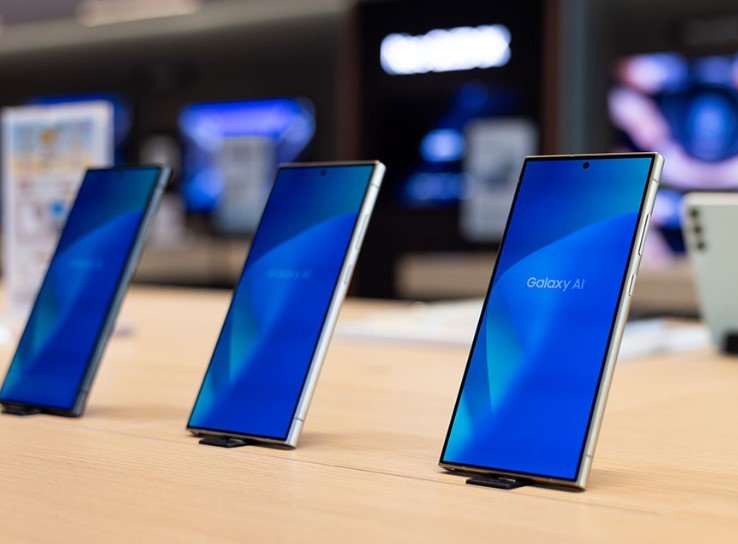If you’ve been thinking about upgrading your phone, it might be time to stop thinking and start buying. A fresh round of tariffs could soon send smartphone prices soaring — and retailers say the clock is ticking.
Tariff Fears Rattle Electronics Market
President Donald Trump’s latest protectionist push is sparking anxiety in the consumer tech world. Though phones haven’t been hit by the harshest tariffs — yet — that grace period might be coming to an end.
Trump’s administration has slapped tariffs of up to 245% on Chinese imports as trade tensions rise. So far, smartphones have been spared. But not for long, if the President follows through on threats to widen the scope.
His goal is clear: bring manufacturing back to the U.S. “We have the labor, we have the workforce, we have the resources,” White House Press Secretary Karoline Leavitt said earlier this month.
But experts are skeptical. Apple, the poster child of American tech, still builds most of its iPhones in China. Reversing that setup could take years. Until then, U.S. consumers may end up footing the bill.
A Tariff Could Hit Phones Where It Hurts: The Price Tag
Smartphones are no longer luxury gadgets. They’re daily essentials. And that makes a potential price spike even more painful.
Retail pros are already ringing the alarm. Ryan McGrath, CEO of asset management firm Asset Panda, called it straight: “If you’re thinking about buying a new phone, definitely buy now.”

Why? Because if tariffs land, retailers are likely to pass those costs directly to buyers.
There’s precedent. During the last major tariff flare-up in 2019, prices for appliances, clothing, and tech crept up fast. Phones, thanks to last-minute exemptions, mostly dodged the fallout. This time could be different.
And this time, there’s less wiggle room. Inflation has already squeezed consumer budgets, and retailers are less likely to absorb extra costs.
Can Apple Bring iPhone Production to the U.S.?
The idea of U.S.-made iPhones sounds patriotic — and economically appealing. Trump has long pushed for Apple to lead the charge.
But the math isn’t simple. Or cheap.
Analyst Laura Martin at Needham spelled it out: even if Apple wanted to come home, reworking the supply chain would be a massive, multi-year endeavor. It’s not just about labor costs. It’s logistics, infrastructure, and vendor relationships built over decades.
Plus, nearly every smartphone component — from screens to chips — is still manufactured overseas. Shifting all that production would mean building a whole new ecosystem on American soil.
So far, Apple has made small steps. It’s expanding production in India. It’s even dipped its toe into U.S. assembly. But a full-scale domestic move? Still a long way off.
What’s at Stake for Shoppers? A Breakdown
Here’s what consumers could be looking at if tariffs hit smartphones and electronics:
| Scenario | Outcome for Consumers |
|---|---|
| 10% Tariff on Phones | $100+ increase on high-end models |
| 25% Tariff on Components | Cost passed on to lower-tier models |
| No Immediate Tariff Relief | Higher prices linger through holidays |
That’s right — your next upgrade could cost a whole lot more.
• Premium phones like the iPhone 15 Pro Max or Samsung S24 Ultra could see price hikes of $150 or more.
• Mid-range models would also take a hit as components get pricier.
• Even budget phones, often marketed at $199 or less, could creep closer to $300.
For consumers, that’s not a small difference.
Retailers and Shoppers Brace for Impact
Retail experts say demand could spike in the short term. “We’re expecting a wave of panic-buying,” said a Best Buy manager in New Jersey. “People don’t want to wait and find out prices jumped 200 bucks.”
But the uncertainty could also paralyze buyers. Some may hold off, hoping tariffs get walked back. Others might jump into financing plans just to beat the price hike.
And while manufacturers may tweak supply strategies to delay the blow, they can’t outrun trade policy forever.
Ultimately, the U.S. could find itself in a strange bind: trying to bring manufacturing home while also hitting consumers with higher costs for tech they rely on daily.








